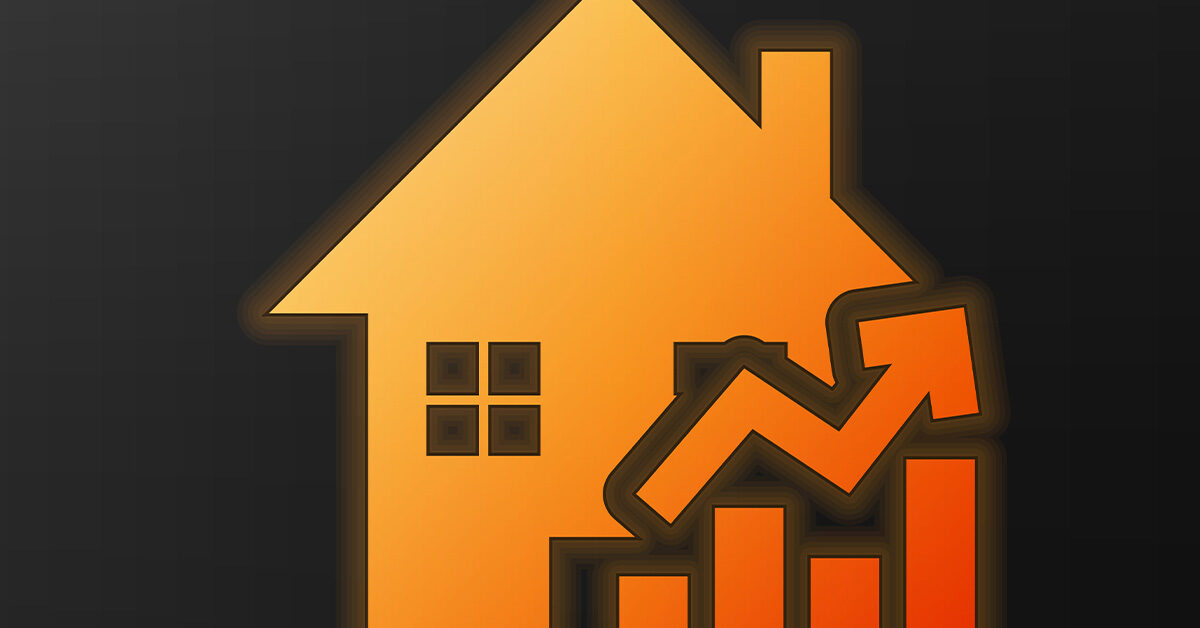Mortgage Application Payments Increased 0.9 Percent To $2,112 In April
Homebuyer affordability declined further in April, with the national median payment applied for by purchase applicants increasing 0.9 percent to $2,112 from $2,093 in March. This is according to the Mortgage Bankers Association’s (MBA) Purchase Applications Payment Index (PAPI), which measures how new monthly mortgage payments vary across time – relative to income – using data from MBA’s Weekly Applications Survey (WAS).
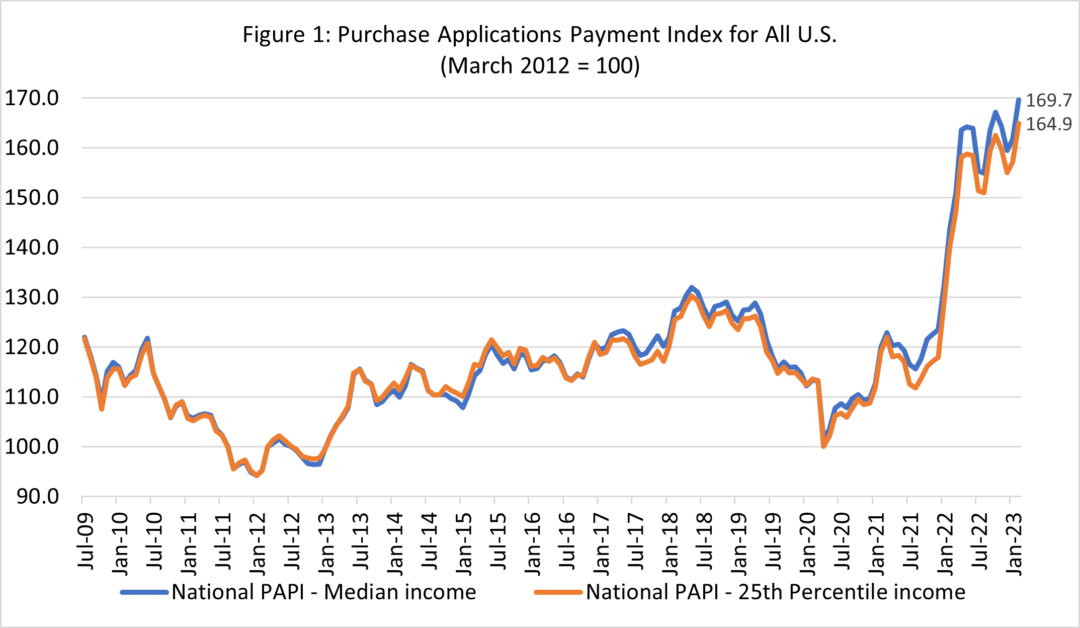
“Homebuyer affordability eroded further in April, with both the typical borrower monthly payment and median purchase amount rising due to higher rates and home prices,” said Edward Seiler, MBA’s Associate Vice President, Housing Economics, and Executive Director, Research Institute for Housing America. “Elevated interest rates and low housing supply have kept many prospective borrowers on the sidelines. However, MBA expects mortgage rates to stabilize and inventory levels to improve, which should incentivize some buyers to reenter the market.”
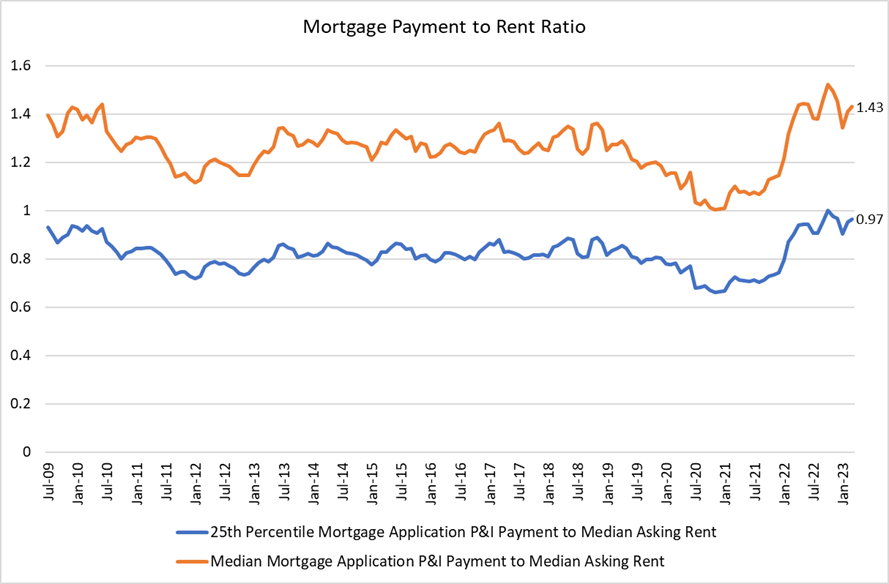
An increase in MBA’s PAPI – indicative of declining borrower affordability conditions – means that the mortgage payment to income ratio (PIR) is higher due to increasing application loan amounts, rising mortgage rates, or a decrease in earnings. A decrease in the PAPI – indicative of improving borrower affordability conditions – occurs when loan application amounts decrease, mortgage rates decrease, or earnings increase.
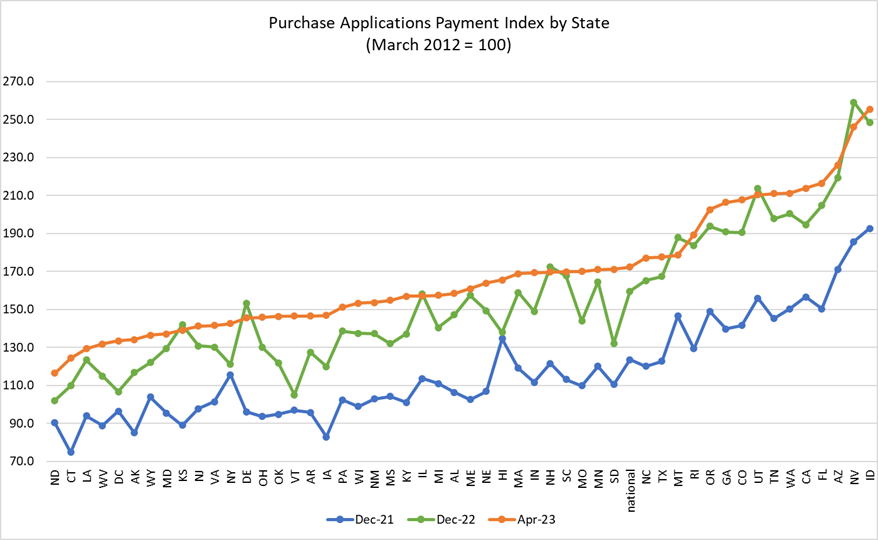
The national PAPI (Figure 1) increased 0.5 percent to 172.3 in April from 171.5 in March. The increase means that the PAPI hit a new record high last month. Compared to April 2022 (163.6), the index is up 5.3 percent. For borrowers applying for lower-payment mortgages (the 25th percentile), the national mortgage payment increased to $1,430 in April from $1,411 in March.
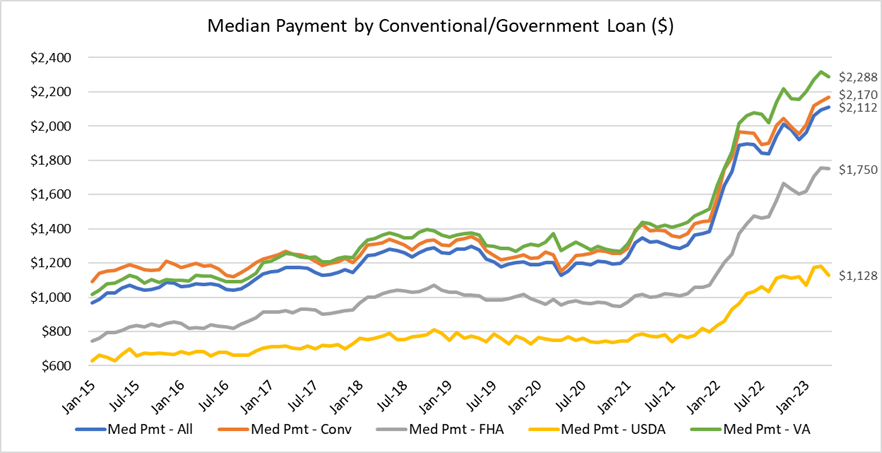
The Builders’ Purchase Application Payment Index (BPAPI) showed that the median mortgage payment for purchase mortgages from MBA’s Builder Application Survey decreased to $2,445 in April compared to $2,508 in March.
MBA’s national mortgage payment to rent ratio (MPRR) decreased from 1.45 at the end of the fourth quarter (December 2022) to 1.43 at the end of the first quarter (March 2023), meaning mortgage payments for home purchases have decreased relative to rents. The Census Bureau’s HVS national median asking rent in first-quarter 2023 increased 10.5 percent on a quarterly basis to $1,462 ($1,322 in fourth-quarter 2022). The 25th percentile mortgage application payment to median asking rent ratio remained essentially flat at 0.96 in March, (0.96 in December 2022).
Additional Key Findings of MBA’s Purchase Applications Payment Index (PAPI) – April 2023
- The national median mortgage payment was $2,112 in April, up from $2,093 in March and from $2,061 in February. It is up $223 from one year ago, equal to an 11.8% increase.
- The national median mortgage payment for FHA loan applicants was $1,750 in April, down from $1,755 in March and up from $1,374 in April 2022.
- The national median mortgage payment for conventional loan applicants was $2,170, up from $2,145 in March and from $1,967 in April 2022.
- The top five states with the highest PAPI were: Idaho (255.6), Nevada (246.3), Arizona (226.1), Florida (216.6), and California (213.9).
- The top five states with the lowest PAPI were: North Dakota (116.4), Connecticut (124.4), Louisiana (129.3), West Virginia (131.9), and D.C. (133.5).
- Homebuyer affordability decreased for Black households, with the national PAPI increasing from 175.8 in March to 176.6 in April.
- Homebuyer affordability decreased for Hispanic households, with the national PAPI increasing from 160.2 in March to 161.0 in April.
- Homebuyer affordability decreased for White households, with the national PAPI increasing from 172.2 in March to 173.0 in April.

The Place for Lending Visionaries and Thought Leaders. We take you beyond the latest news and trends to help you grow your lending business.
